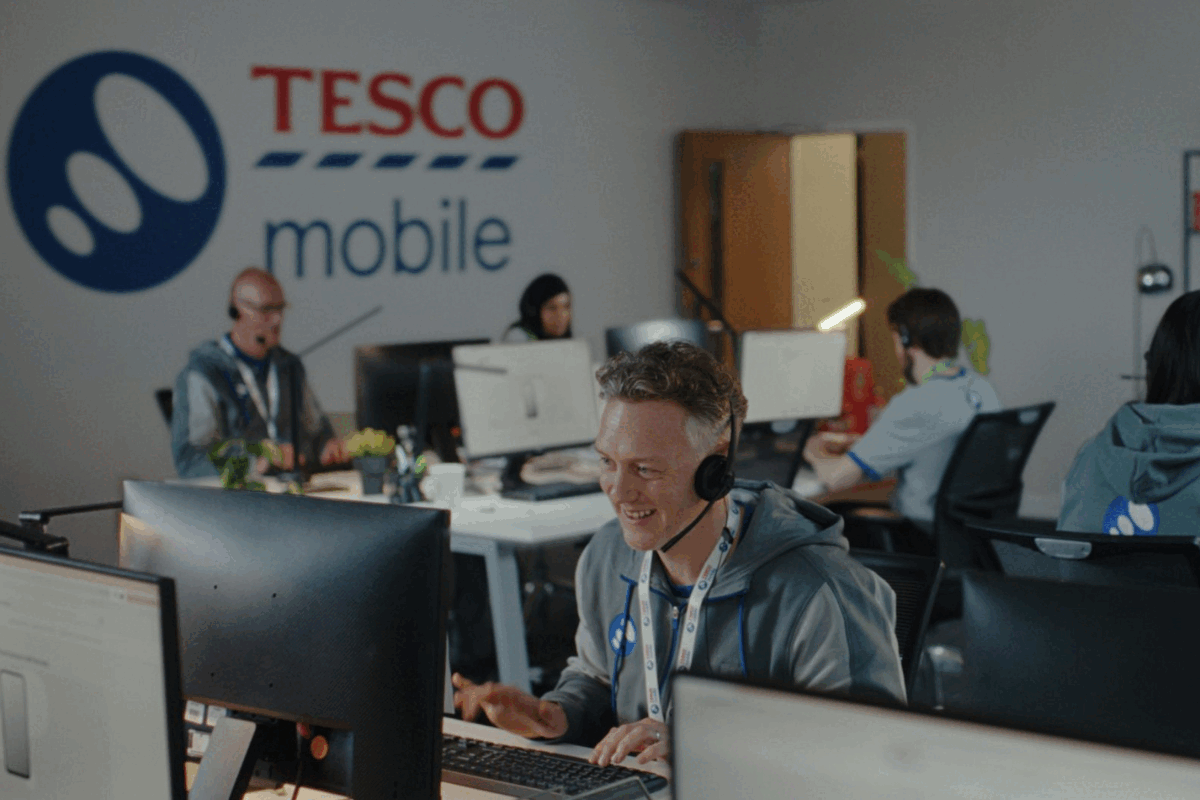Know Your Audience: The Omnichannel Attribution Problem
- Tuesday, November 4th, 2014
- Share this article:
This article originally appeared as the cover story of the November edition of our quarterly magazine. To get the full experience, you can read the issue online here, or subscribe to receive a physical copy here.
 Since the dawn of the Dotcom Boom, marketers have been looking for ways to prove that digital, and now mobile, influence consumer behaviour. But trying to identify which channel drove a sale is pretty difficult. Indeed, attribution is arguably one of the hottest topics, and biggest challenges, in modern marketing.
Since the dawn of the Dotcom Boom, marketers have been looking for ways to prove that digital, and now mobile, influence consumer behaviour. But trying to identify which channel drove a sale is pretty difficult. Indeed, attribution is arguably one of the hottest topics, and biggest challenges, in modern marketing.
Millward Brown has found that mobile devices are now used for 197 minutes every day – half an hour more than time spent watching TV. This is driving increased mobile ad spend and putting growing pressure on advertisers to measure mobile’s impact on the bottom line.
Google and Facebook will between them own more than 70 per cent of the mobile ad industry in 2014, according to eMarketer, with the former’s lead in search offering, at least, a simple ad model for mobile. Although it’s a distant number two, Facebook has a growing arsenal of tools for advertisers, combining its own rich user data with that of other services to offer even more relevant ads.
With words like multiscreen, multichannel and even omnichannel thrown around readily at most board meetings today, it’s up to marketers to determine how best to use in-house and external data to find and target new and existing customers wherever they are. Although the huge platforms offer easy-to-use solutions for frazzled marketing execs, should you really give all your data up to Google and Facebook? Is it a good idea to chance it with a lesser-known ad tech platform, or is it better to sit it out and hope for another model to come over the horizon?
Last-click attribution
Many advertisers are still comfortably chugging along using last-click attribution, for both search and display, even though they know it doesn’t give an accurate picture of how well their budget is working. Who knows how many days or weeks of research, offline and on, have led to the point where the consumer inputs the search term into Google that leads to them completing the sale a few minutes later.
“Advertising is the only industry where ‘he who comes last gets paid first’,” says Gareth Davies, CEO of multi-screen ad-buying platform, AdBrain. “Cookie-based conversion tracking is ‘ad tech 1.0’, where ad servers like Google’s DoubleClick and Atlas, now owned by Facebook, have helped marketers and publishers unify digital marketing spend into one place, giving them one set of centralised reporting for them to work out where the conversion came from. Historically, Google gets massively credited with the final conversion.”
In reality today, people are switching between lots of different channels, using multiple digital touchpoints over the course of a purchase. This behaviour will only become more profound as tablet ownership tips past 50 per cent in the UK, which will happen this year according to the IAB, and the Internet of Things becomes a day-to-day reality.
“I spend a lot of time trying to answer the question: ‘why aren’t clients spending on crossscreen advertising?’” says Jon Hook, head of mobile at Mediacom. “You’re still struggling to nail cross-screen unless you are Facebook or Google. Otherwise, it can end up seeming like a very expensive game of ‘Guess Who?’.”
He says that, in spite of the enthusiasm that cross-device tracking might garner, he is lucky if his clients have a mobile budget, let alone something that works across siloed ad teams.
Unified logins
Increasingly, unified logins, where platforms with large user numbers offer one-click signin for online services, look like an easy win for marketers that need to find their customers across different devices. In a multi-service, multi-password world, they also remove the need for people to remember different login details and to input data on their smartphone.
The unified login race is now in full swing, with Google, Facebook, Twitter, Microsoft and Yahoo all offering their own, relatively compelling options. Yahoo recently revealed plans to drop other login providers, although a date has not been finalised, as it seeks to boost its own cross-device efforts. This deterministic – or first-party – data ensures these platforms know exactly who the user is and they claim that ease of use actually increases conversion from search or download to sign up.
“Given Facebook’s dominance in the social login space, if as a user I can now use my Facebook login to access approved thirdparty apps and content that is tailored to the information Facebook already know about me, than that sounds pretty interesting,” says Hook. “And from an agency point of view, if the user is logged in via Facebook, we start to get a much clearer and more accurate view of that user’s media consumption and habits.”
Facebook’s mobile custom audiences use the same theory as cookie-based targeting but require an advertiser to add an SDK into the app so that Facebook, or a third-party DSP, can understand what you’re browsing and where you’re going in order to target ads. That can also be based on your interests, things you engage with and your demographics.
Both Facebook and Google have made a series of big data partnerships with companies like DataLogix and Axciom for linking online and offline, adding another layer of insight into customer behaviour, which is all then used with the advertiser’s own CRM information.
Facebook is now testing the Audience Network, using APIs to show its ads in other apps, benefiting from existing targeting capabilities and tailoring the creative to the platform where it’s being shown. Along with this, the company is also trialling a solution where retailers send POS (Point Of Sale) data directly to the social network so it can measure the impact of its ads on in-store sales, which may eventually cut out the need for it to work with third-party data providers. It’s clear that these key players are keen to own the entire user journey, rather than share the reward. But is the industry really buying it?
Black box
“It’s reported that around 80 per cent of the top apps on mobile use Facebook social logins,” says Anthony Mullen, senior analyst of marketing leadership at Forrester Research. “Janrain has released a report showing that across platforms, Facebook has a 44 per cent share compared to Google+ with 37 per cent – the rest including LinkedIn, Twitter, Yahoo and Windows, are all sitting at six per cent or below. Interestingly even for B2B sites, Facebook still leads with over 30 per cent share.
“But from our own FORR data [see graph] we can see that social login is the least adopted social tactic by marketers despite the benefits that it can provide them,” he adds. “There’s a fear among marketers that if you use deterministic platforms, you’re always in a black box,” says AdBrain’s Davies. “Data is a brand’s crown jewels and although you may get short term results, they [deterministic ad platform providers] know your customers better than you do. If you’re the CMO of Ford you want more Ford cars sold, fewer Chevy, and the way you do that is knowing your customers. The threat is giving away data. It’s not that they’re cross-pollinating – but they are improving their services for everyone, competitors included.”
Davies uses the phrase “user journey attribution” to describe the complex methodology needed to track and target. Statistical, probabilistic or predictive attribution is now used by ad tech providers, including Adbrain and Drawbridge, combining first-, second- and third-party data, and using a whole lot of algorithms, in order to make a good guess at who the user is cross-platform.
Using a large number of device-specific signals, which include the specs of the device, the behaviour of that device and high-level location, along with “smart maths”, ad tech providers can build probabilistic models that tie devices together in a pretty accurate way. The US-based ad tech provider 4INFO has recently been granted a patent for its technology, which has enabled it to link the data for 152m mobile devices to 101m US households.
“The myth that has been perpetuated is that advertisers or ad technology providers need to be 100 per cent certain of a user’s identity, even anonymously, to be able to accurately track, target, and attribute user conversations across devices,” says Nimeshh Patel, VP strategic partnerships for EMEA at Drawbridge. “While logins through a social network, email client or other platform, are one way to access this, there are now advanced probabilistic models that can be leveraged to create a portrait of a consumer using device and browser data – with much lower privacy concerns.”
What deterministic providers like Facebook claim is that they offer tracking, targeting and attribution at a scale that other ad tech providers cannot. But Patel disagrees: “Several companies, including Drawbridge, have developed machine-learning models that gather information from browsers, apps and devices through ad requests, and connect the dots between online behaviours to paint a 360-degree portrait of a consumer. This allows advertisers to serve relevant ads to hundreds of millions of consumers on billions of devices, without the restrictions of the ‘walled gardens’ of social media or other login-based platforms.”
Data security
New laws coming from the EU will dramatically change the ability of companies to get, track and use data if they haven’t explicitly informed you up front, which means we may quickly move from a privacy-invading to a privacyenabling world. “Use of social logins varies client by client,” Hook explains. “Some prefer not to as they feel users don’t like it and they don’t want to share their data with third parties, understandable given all the noise around privacy and digital fingerprinting.”
Data security companies like Abine are now adding solutions to the market and investment is moving accordingly. “Advertising is good, targeting advertising is fine – but collecting information secretly to build a profile of people?” says CEO Rob Shavell. “We just don’t expect data to be used in that way.” Abine offers a unified login that’s been downloaded by 12m people. “We’re one business with one revenue model: we charge for more privacy and more control over information,” Shavell says.
The Respect Network, likewise, has brought together 50 founding partners to create a paidfor personal cloud network for businesses and individuals to share private information without having to go via the ad-funded players. It hopes its Respect Connect login will offer a viable unified login alternative for privacyconscious internet users. Even Facebook at its last F8 conference announced its intention to offer an option for anonymous login across different services. The company explained that it’s keen to enable people to try out apps before they share any data and this is currently in test. Shavell isn’t totally convinced: “This actually strengthens Facebook’s position as it still gets all the data, they’re just limiting app developers’ opportunity to get information back.
Slowing growth
Although mobile advertising has seen huge growth over the past few years, this is slowing. As well as a natural levelling-off as the channel matures, the marketing industry will start to develop new revenue strategies, perhaps turning away from performance and looking more towards areas like in-app sales and subscriptions. And depending on the success of more secure data solutions, we may see ‘free’, ad-funded platforms shift considerably.
“I think the most valuable online advertising business we’re ever going to see is Google – today,” Shavell concludes. “There’s so much talk in the industry about inferring what we desire from our patterns of behaviour – the more data, the better they will be at telling us what we want – but I don’t think they will be able to do that much of better job even with more data. Just think about getting a birthday present for a close family member – you know more about that person than anyone else – but is it ever easy to get a gift for them?”

















